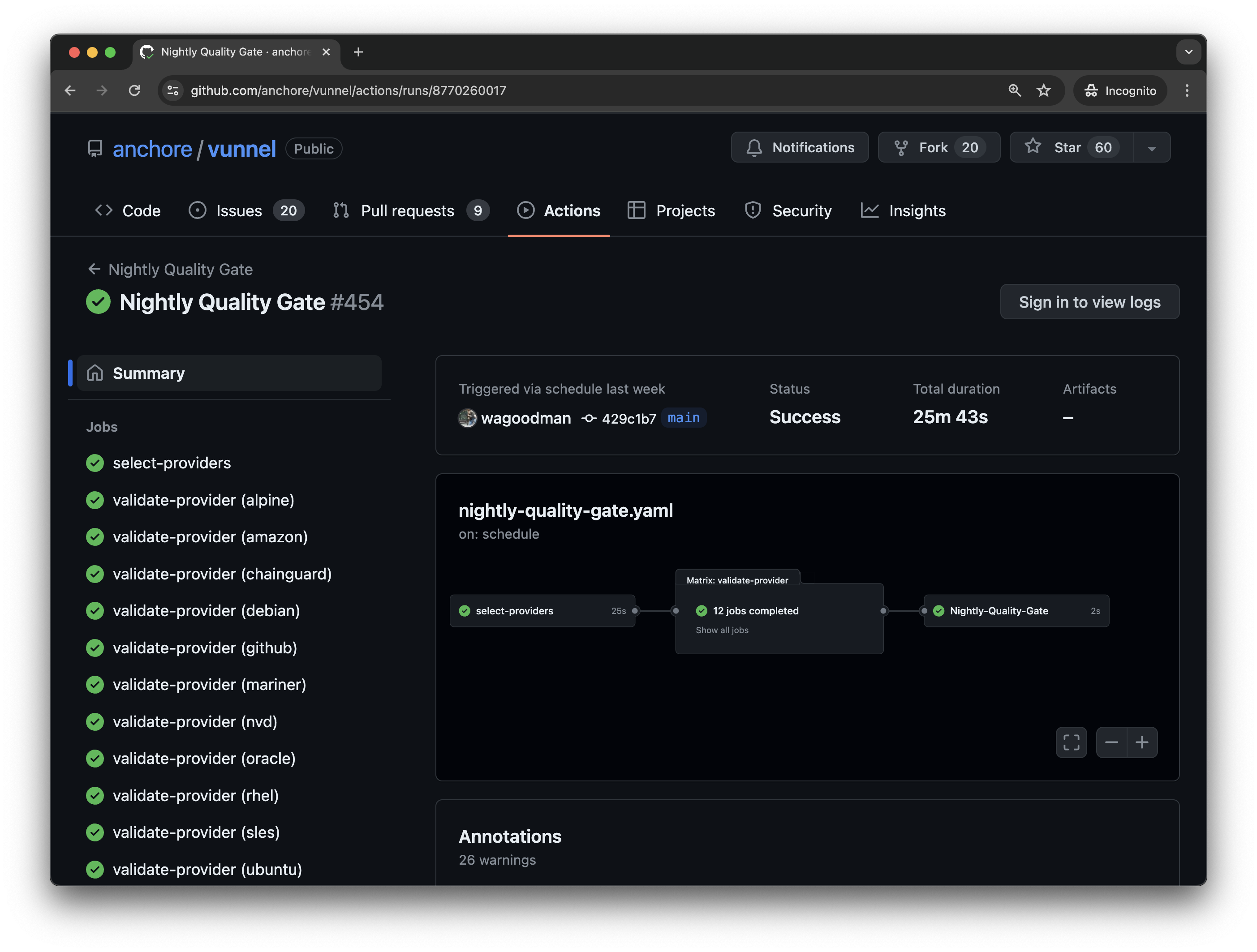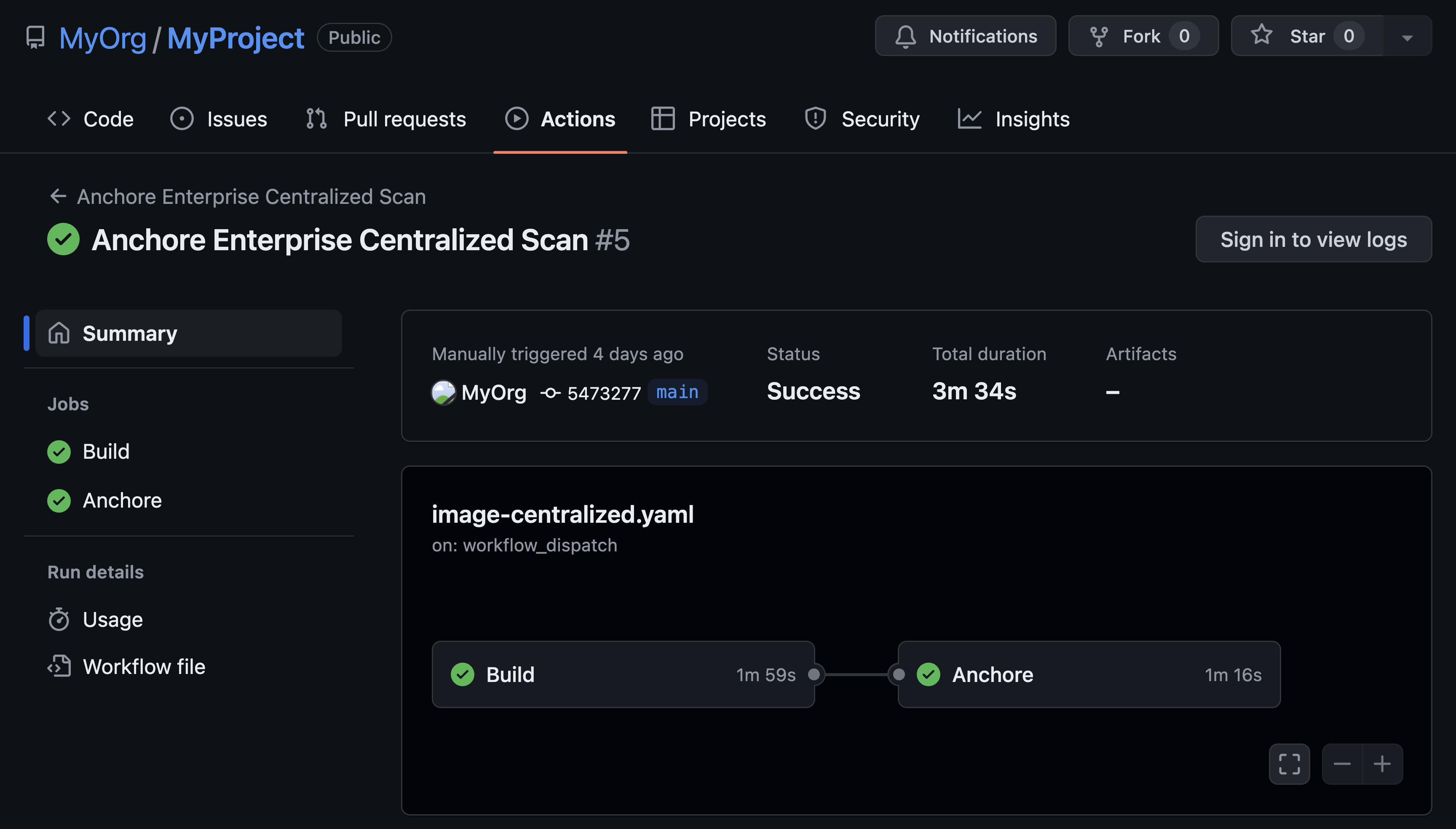Today, we are announcing the release of Anchore Enterprise 5.5, the fifth in our regular minor monthly releases. There are a number of improvements to GUI performance, multi-tenancy support and AnchoreCTL but with the uncertainty at NVD continuing, the main news is updates to our feed drivers which help customers adapt to the current situation at NIST.
The NIST NVD interruption and backlog
A few weeks ago, Anchore alerted the security community to the changes at the National Vulnerability Database (NVD) run by the US National Institute of Standards and Technology (NIST). As of February 18th, there was a massive decline in the number of records published with metadata such as severity and CVSS records. Less publicized but no less problematic has been that the service availability of the API that enables access to NVD records has also been erratic during the same period.
While the uncertainty around NVD continues and recognizing that it continues to be a federally mandated data source (e.g., within FedRAMP), Anchore has updated its drivers to give customers flexibility in how they interact with its data.
In a typical Anchore Enterprise deployment, NVD data has served two functions. The first is a catalog of CVEs that can be correlated with advisories from other vendors to help provide more context around an issue. The second is as a matching source of last resort for surfacing vulnerabilities where no other vulnerability data exists. This often comes with a caveat that the expansiveness of the NVD database means there is variable data quality which can lead to false positives.
See it in action!
To see the latest features in action, please join our webinar “Adapting to the new normal at NVD with Anchore Vulnerability Feed” on May 7th at 10am PT/1pm EST. Register Now.
Improvements to the Anchore Vulnerability Feed Service
The Exclusion feed
Anchore released its own Vulnerability Feed with v4.1 which provided an ‘Exclusion Feed’ to avoid NVD false positives by preventing matches against vulnerability records that were known to be inaccurate.
As of v5.5, we have extended the Anchore Vulnerability Feed service to provide two additional data features.
Simplify network management with 3rd party vulnerability feed
The first is the ability to download a copy of 3rd party vulnerability feed data sets, including NVD, directly from Anchore, so that transient service availability issues don’t generate alerts. This simplifies network management by only requiring one firewall rule to be created to enable the retrieval of any vulnerability data for use with Anchore Enterprise. This proxy-mode is the default in 5.5 for the majority of feeds but customers who want to continue to benefit from autonomous operations that don’t rely on Anchore and contact NVD and other vendor endpoints directly can continue to use the direct-mode as before.
Enriched data
The second change is that Anchore is continuing to add new CVE records from the NVD database that customers use while providing Enriched Data to the records, specifically for CPE information which helps map affected versions. While Anchore can’t provide NVD severity or CVSS records, which by definition have to be provided by NVD themselves, these records and metadata will continue to allow customers to reference CVEs. This data is available by default in the proxy-mode mentioned above or as a configuration option with the Direct Mode.
How it works
For the 3rd party vulnerability data, Anchore is running the same feed service software that customers would run in their local site which periodically retrieves the data from all of its available sources and structures the data into a format ready to be downloaded by customers. Using the existing feed drivers in their local feed service (NVD, GitHub, etc) customers download the entire database in one atomic operation. This contrasts with the API based approach in the direct-mode which means that individual records are retrieved one at a time which can take time. This can be enabled on a driver-by-driver basis.
For the enriched data, Anchore is running a service which looks for new CVE records from other upstream sources, for example the CVE5 database hosted by MITRE and custom data added by Anchore engineers. The database tables that host the NVD records are then populated with these CVE updates. CPE data is sourced from vendor records (e.g., Red Hat Security Advisories) and added to the NVD records to enable matching logic.
Looking forward
Throughout the year, we will be looking to make additional improvements to the Anchore Vulnerability Feed to help customers not just navigate through the uncertainty at NVD but reduce their false positive and false negative count in general.
See it in action!
Join our webinar Adapting to the new normal at NVD with Anchore Vulnerability Feed.
May 7th at 10am PT/1pm EST
May 7th at 10am PT/1pm EST



